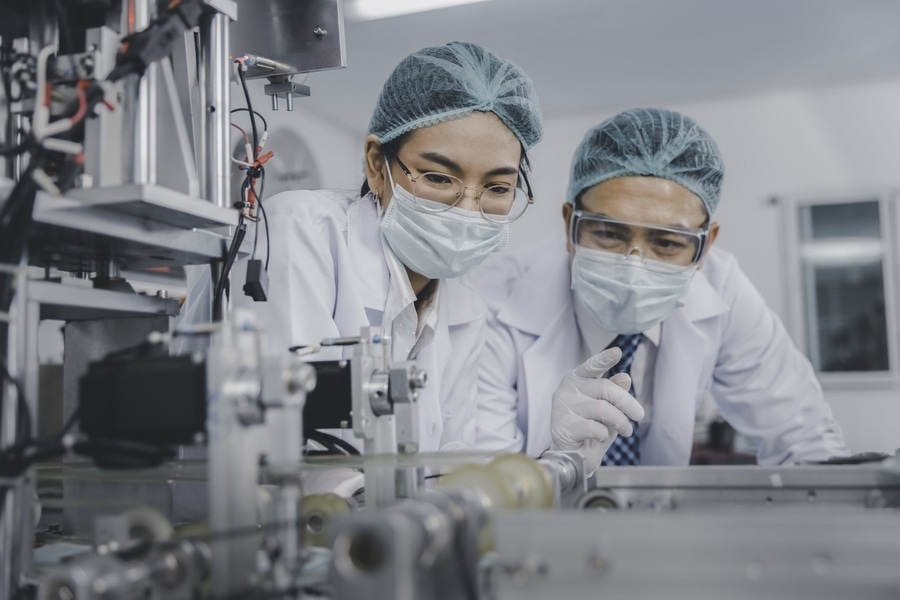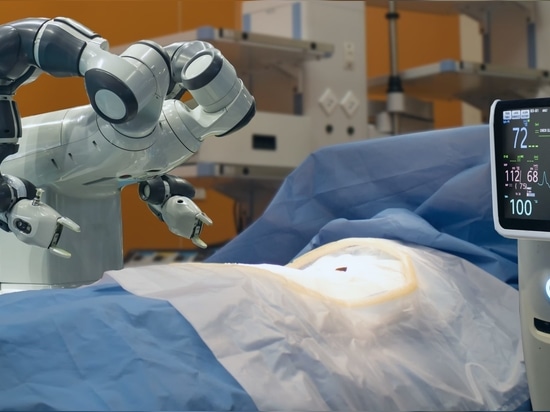
#Industry News
MAKING THE RIGHT CHOICE: SELECTING A RELIABLE MEDICAL EQUIPMENT MANUFACTURER
Step-by-Step Process to Find the Right OEM /.ODM
Bringing a medical device to market is a years-long process that costs tens of millions of dollars. To reduce time and expense, many medical device manufacturers outsource their essential parts and equipment, such as medical computers, to medical contract manufacturers, namely Original Equipment Manufacturers (OEM) and related Original Design Manufacturers (ODM).
How does one find the correct OEM? Today's article addresses this vital question, covering the essential certifications they should have as well as any additional qualifications, such as meeting green computing standard goals.
OEM: What It Means and Why It's Important
Original Equipment Manufacturers (OEMs) play a crucial role in the supply chain by producing and selling products marketed by other companies, such as medical device manufacturers, under their own brand names. In contrast, OEMs that not only manufacture but also design and sell products under their own brand are referred to as Original Design Manufacturers (ODMs). This distinction highlights the varying levels of involvement in product development and branding within the manufacturing sector.
OEM sales may include parts of their products. For example, an MRI manufacturer may attach an OEM-built medical box PC to handle all the MRI's computing functions.
Why Medical Device Manufacturers Should Work Strictly with OEMs
A medical device is defined as any machine, instrument, equipment, device, or delivery system involved:
In the prevention, diagnosis, or treatment of illness or disease.
In the detection, measurement, restoration, correction, or modification of a body structure or function for some health purpose.
Because medical devices can directly affect a patient's health, they are highly regulated by governing bodies like the FDA to ensure their safety and efficacy. Medical device manufacturers must seek partnerships with genuine Original Equipment Manufacturers (OEMs) and Original Design Manufacturers (ODMs) who possess extensive knowledge of industry regulations. These experts are equipped with crucial know-how, skilled personnel, advanced production capabilities, specialized equipment, and high-quality materials for crafting tailored medical device components. In contrast, generic off-the-shelf products and those from resold brands often fall short, unable to satisfy many, if not all, of the stringent requirements necessary for compliance and safety in the medical field.
60601-1 Certification
IEC 60601 is a worldwide standard ensuring that medical devices and equipment are safe for near-patient use. IEC 60601-1 means a medical device like an X-ray and equipment (e.g., a medical tablet) have been tested and certified not to shock the patient accidentally. Devices certified to meet IEC 60601-1-2 standards have been tested so as not to cause electromagnetic interference with nearby medical devices and equipment functions.
Medical device manufacturers can obtain the 60601-1 certificate for an outsourced component from their contracted Original Equipment Manufacturer (OEM). Device manufacturers should request the complete test report. They can then compare the certificate's report reference number with the report number on the test report. This process ensures that the OEM is legitimate and not simply a rebrander, whose lack of direct control over the component could jeopardize the safety and efficacy of the device.
ISO: 13485 Certification.
ISO 13485 provides a quality management system for medical device manufacturers to ensure their devices are safe, reliable, and effective. Virtually every aspect of medical device manufacturing is covered: design, development, production, inspection, testing, packaging, labeling, installation, servicing, repair, maintenance, disposal, and documentation. Many countries will not allow the sale of non-ISO 13485-certified medical devices in their markets.
Medical device manufacturers should partner with medical equipment OEMs certified to ISO 13485: 2016, as this shows a similar commitment to high-quality products and excellent service.
Other Qualifications
Beyond the above certifications, medical device manufacturers should query medical equipment OEMs for the following:
Product portfolio: Genuine Original Equipment Manufacturers (OEMs) maintain comprehensive control and ownership over every aspect of their products, encompassing everything from the selection of raw materials to intricate custom design features. This level of oversight enables medical device manufacturers to expedite the process of bringing their innovations to market while simultaneously reducing costs.
For instance, an OEM can significantly accelerate the development timeline by drawing upon established designs and components from prior projects rather than embarking on the costly and time-consuming journey of creating an entirely new design from scratch. This not only fosters efficiency but also allows for the incorporation of proven technologies, minimizing risk and enhancing the overall reliability of the medical devices.
Another advantage is that many of these designs have already passed medical certifications, which increases their chances of being approved quickly by governing bodies.
Control over Bill of Material: A bill of material (BOM) lists everything that goes into a product or service: components, raw materials, how to construct, etc.
Changes in a BOM can delay or even halt governing agencies' approval of a medical device as they review those changes and their impacts on patients. Actual OEMs can significantly aid medical device manufacturers by revealing their products' BOM and, more importantly, guaranteeing it will remain the same during the approval process and the product's lifecycle (usually 5-7 years).
Selling to the public sector: Government agencies and departments like the Veterans Administration have unique medical device and equipment requirements. Examples range from smart card ID readers to ENERGY STAR compliance.
Original equipment manufacturers (OEMs) and original design manufacturers (ODMs) with experience serving the public sector can provide invaluable insights to medical device manufacturers. This is especially true when the OEM's headquarters is situated within that nation, as their localized knowledge and established connections can significantly enhance collaboration and innovation in the healthcare landscape.
Leveraging Cybernet's 30 Years of Experience as OEM/ODM
Medical device manufacturers should contract with OEMs for new devices. The right OEM has everything from the proper certifications to selling to the public sector.
OEMs can significantly aid medical device manufacturers by reducing their devices' costs and speeding up their development. Device manufacturers should carefully vet OEMs before starting by making sure they're actual equipment manufacturers. That fact will make verifying other essential factors like certifications and design control more straightforward and trustworthy.
Contact the team at Cybernet Manufacturing if your medical device manufacturer is looking for an Original Equipment and Design Manufacturer. Our medical computers are medical-grade (60601-1 and 60601-1-2 certified), and our manufacturing processes and products have the latest ISO 13485 certification (2016). Our team members will happily discuss our numerous certifications as well as our nearly 30 years of experience in the design, manufacture, and testing of all-in-one computers, box PCs, and tablets in the healthcare, industrial/manufacturing, and enterprise markets.








